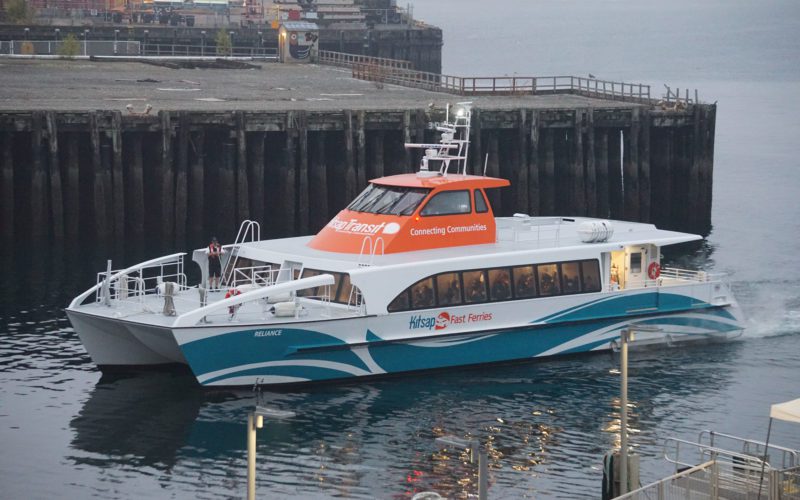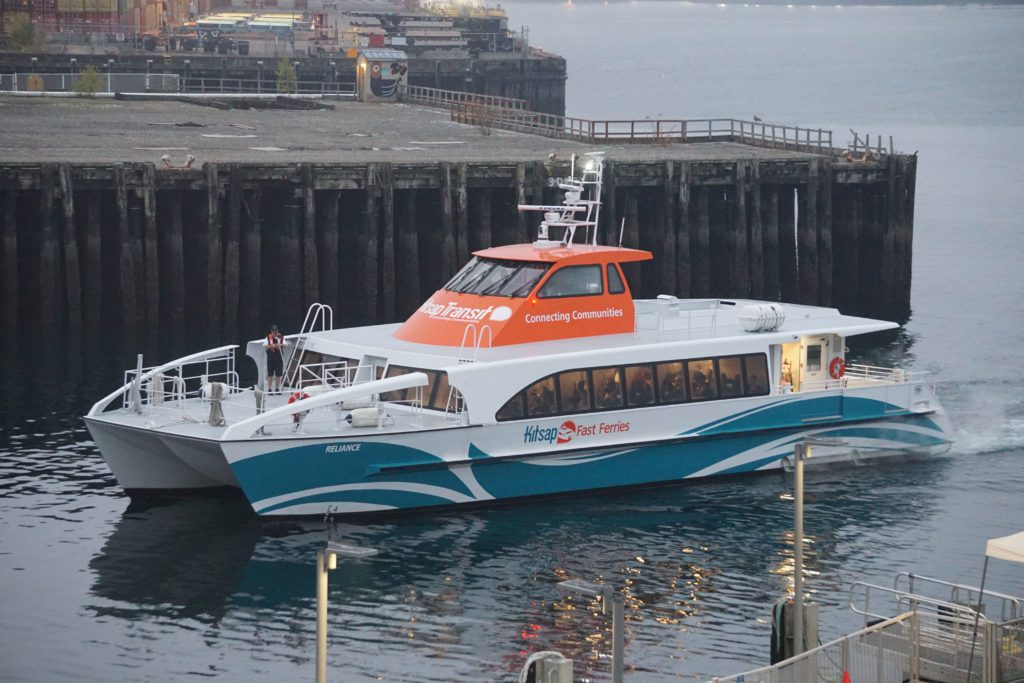
The fast ferry Reliance was halfway across Puget Sound making 34 knots when deck hand Chaz Peters called the wheelhouse with an emergency. A passenger was having a seizure.
Senior deck hand Mike Poole handed the conn back to Capt. Tom Cain and pulled up the camera footage showing the injured passenger. Both deck hands tended to the man as Cain sped toward Bremerton, Wash., on the west side of Puget Sound.
“We’re breathing and the seizure seems to have passed,” Peters relayed to the captain a few minutes later. “He’s not responding to me, but his eyes are open.”
The passenger’s condition stabilized as the ferry approached its destination. Another passenger with medical training helped as the deck hands tried to comfort and calm the man.
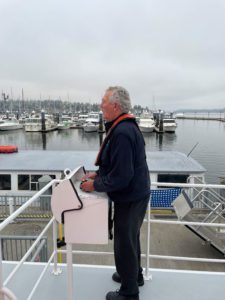
Reliance left Pier 50 in downtown Seattle about 20 minutes earlier on a foggy, damp October morning. Cain steered off the dock from the starboard helm station before transferring the controls to Poole sitting in the port helm chair.
Ferries approached Seattle from multiple directions and tugboats crossed this way and that as Reliance entered Elliott Bay. Cain and Poole watched the radar and together decided on a course through the crowded waters.
“There was a lot of traffic all of a sudden,” Cain said. “Elliott Bay is always up in the air. You can have traffic all over the place and then you can have nothing. But that was fairly busy.”
The 78-foot Reliance is one of three ultra-low-wake ferries operated by Kitsap Transit. All three were specifically designed to operate on the Bremerton-to-Seattle route through Rich Passage and Sinclair Inlet. The two narrow waterways have shorelines susceptible to erosion from vessel wakes. More than two decades ago, residents living along the waterways sued to prevent fast ferries from running at high speed through the area and ultimately won.
The lawsuit effectively ended a Washington State Ferries fast ferry service running between the two cities.
About a decade later, Kitsap Transit launched a pilot project to consider restoring the fast ferry service. It contracted with All American Marine and Teknicraft, along with other partners, to design and build the prototype ferry Rich Passage 1 in 2011. It creates minimal wake with less wake energy than a traditional fast ferry.
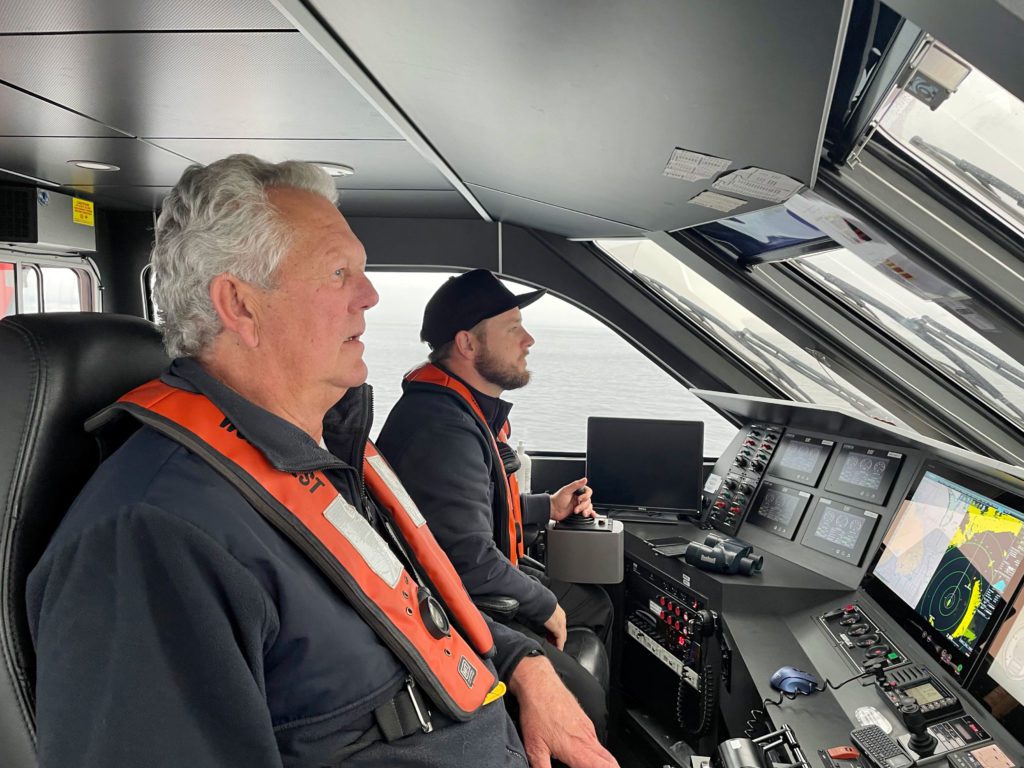
Studies later confirmed the vessel’s impact on the shoreline was no different than that of normal weather events, according to John Clauson, executive director of Kitsap Transit, an independent agency serving Kitsap County, Wash. “So that gave us the data (to show) that we could operate a high-speed ferry between Bremerton and Seattle,” he recalled recently.
Rich Passage 1 was the inspiration for Reliance and its sister vessel Lady Swift, both of which entered service in 2019. The vessels are extremely light, with optimized hull forms. They are equipped with an advanced Naiad Dynamics system that includes interceptors, active ride control and a carbon-fiber hydrofoil running between the catamaran hulls just beneath the waterline.
“This system provides trim control in three different ultra-low-wake settings based on passenger load,” Clauson said. “The system has a GPS geofence programmed into it so that it automatically switches into and out of the ultra-low-wake settings when the vessel is in, enters, or exits the wake-sensitive area consisting of Sinclair Inlet and Rich Passage.”
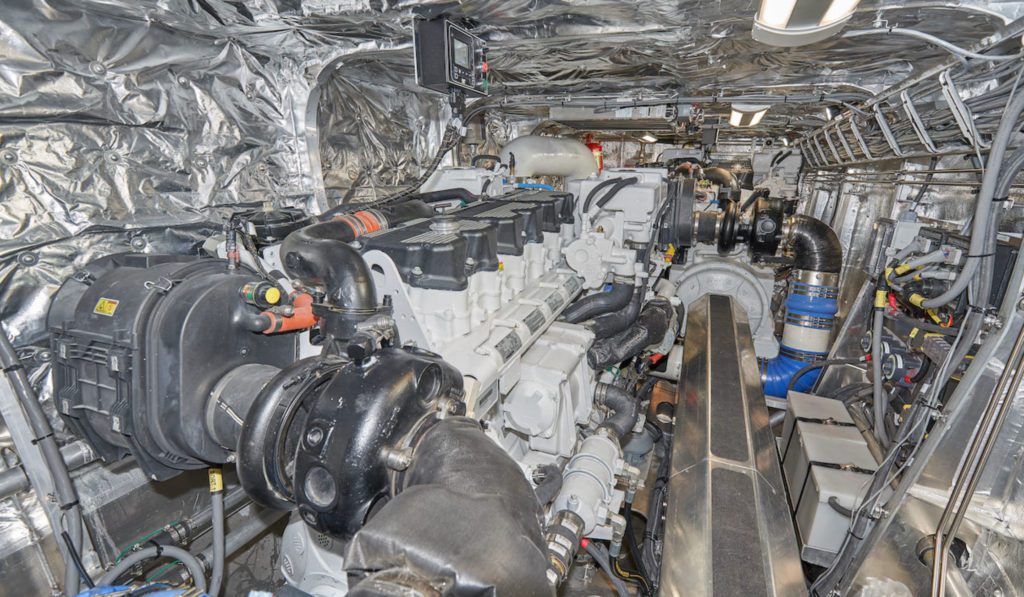
Reliance and Lady Swift are a little different than Rich Passage 1, which is equipped with four 873-hp Caterpillar C18 engines. With the arrival of EPA Tier 4 rules between the two projects, Kitsap opted for 803-hp C18s in the new boats that meet Tier 3 standards. The main engines are directly coupled to HamiltonJet waterjets. In the right conditions, the two newer ferries can exceed 40 knots.
“I love these Hamilton jets and all of the reserve power,” Cain said of Reliance. “And I can walk this thing sideways to China if I wanted to.”
“You’ll never find a captain who doesn’t like power,” he added.
With the passenger stabilized below deck, Poole returned to the wheelhouse to guide Reliance toward Bremerton. The vessel entered Rich Passage at about 36 knots and stayed there until the ferry made its final turn to starboard into the dock.
Peters continued to update Cain and Poole on the passenger’s condition. The man continued to improve, albeit with some ongoing symptoms from the apparent seizure. Passengers departed the ferry quickly to make room for paramedics, who escorted the man off the vessel under his own power.
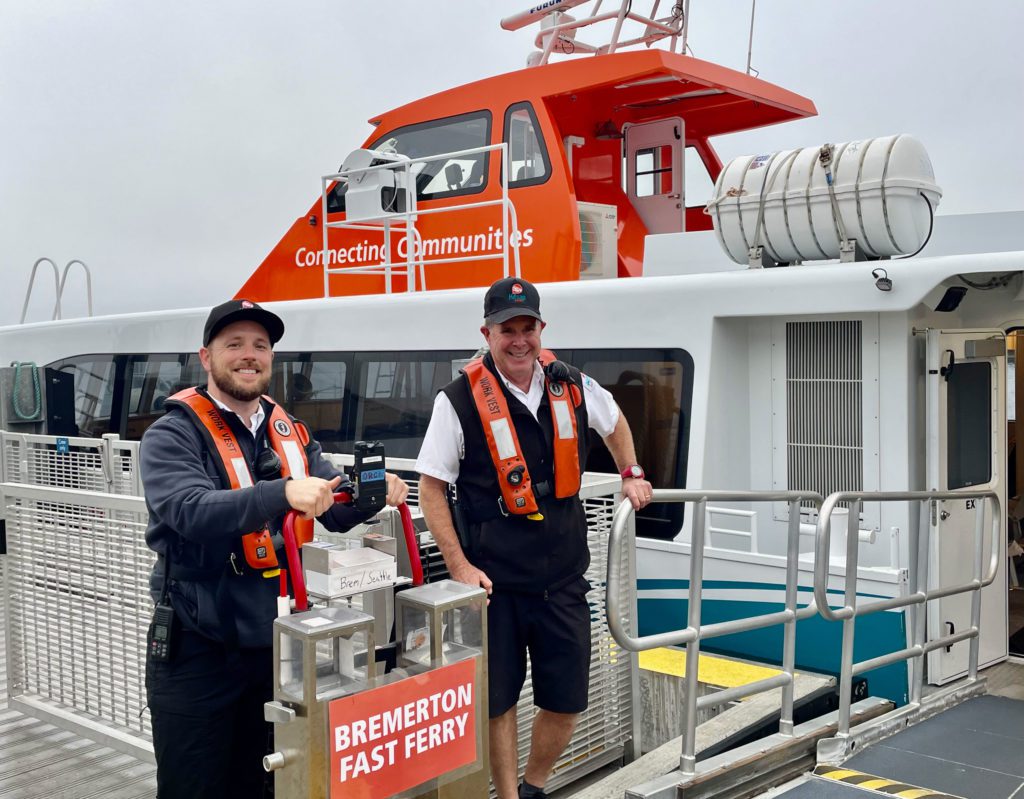
Incidents like this one are rare on Kitsap ferries, Cain said, and it’s something ferry personnel train for. Weather presents a much more regular challenge for captains and crews. Fog is a recurring presence in Puget Sound, and wind and waves occasionally lead to canceled runs.
“Sometimes out in the middle of the sound the weather can get pretty bad, especially with winter coming up,” Cain said.
Tight quarters in Rich Passage and traffic in Elliott Bay keep captains on their toes, as do the presence of recreational vessels along the route. A boat ramp in West Seattle brings lots of small boats into the waterway.
“You’ve got to keep your head on a swivel here with all those little runabouts,” Cain said. “Your radar screen will look like the Milky Way with all those little fishing boats. They don’t know that it’s a shipping lane and they don’t care.”
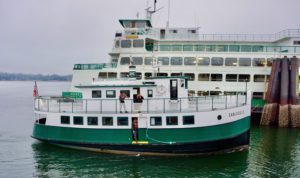
The medical emergency and its aftermath put the ferry behind schedule for its final trip of the morning to Seattle. The 105-year-old Carlisle II ferry arrived at the Bremerton dock from Port Orchard as Reliance prepared to get underway.
The wooden-hulled Carlisle II is one of the last remaining vessels from the old “mosquito fleet” that carried people and freight throughout Puget Sound in the 19th and 20th centuries. The vessel has undergone extensive upgrades and maintenance, including a repower and other improvements in 2021.
Given its long history, Cain joked that not a single screw on the vessel is original.
 He joined Kitsap Transit in 2006 after 27 years in the U.S. Navy. At that time, the ferry system used a contractor to operate its local ferries operating around Bremerton. The system’s growth started with the successful trial of Rich Passage 1. That led to a successful ballot measure in 2016 that raised tens of millions of dollars to launch the Seattle fast ferry service. Kitsap also took over operation of the local ferries in 2021.
He joined Kitsap Transit in 2006 after 27 years in the U.S. Navy. At that time, the ferry system used a contractor to operate its local ferries operating around Bremerton. The system’s growth started with the successful trial of Rich Passage 1. That led to a successful ballot measure in 2016 that raised tens of millions of dollars to launch the Seattle fast ferry service. Kitsap also took over operation of the local ferries in 2021.
Funding from that ballot initiative paid for construction of Reliance and Lady Swift, as well the 128-foot Enetai and Commander built with Tier 4 MTU main engines. It also helped pay for the 70-foot Waterman, the first hybrid-electric ferry operating within Puget Sound. That vessel, delivered by All American in 2019, is equipped with Cummins main engines and a BAE Systems HybriGen package.
“It is way more efficient than the comparable diesel vessel,” Clauson said about Waterman. “It consumes substantially less fuel. In fact, we are in design stage now to build a sister that will be 100 percent electric. Glosten is the firm that designed Waterman, and we are working with them to design the new all-electric vessel.”
Peters joined Cain in the wheelhouse for the run back to Seattle. He started with the ferry system three years ago in a customer service role that also included backup deck hand duties. He later came on the boats full time.
“I was one of the last people to get in on the ground floor before everything blew up,” Peters said of the ferry system. “It seems like we are double the size of when I started.”
“Oh, we are more than double,” Cain said, adding, “What we need now is our own hub in Seattle. That’s the dream. It’s in the works.”
Kitsap ferries share dock space at Pier 50 in Seattle with King County Water Taxi vessels that serve West Seattle and Vashon Island. The late start from Bremerton meant Reliance lost its berthing time and would have to wait for another vessel to unload.
Cain slowed the ferry a few hundred yards from Pier 50 while a King County vessel prepared to get underway. Before long it was moving, and Cain steered into the tight berth and spun 180 degrees to land with its port side against the terminal. The 100 or so passengers on board filed off the boat to begin their workdays.
Given the passenger emergency earlier that morning, Cain was pleasantly surprised at their relatively prompt arrival. “We’re only about five minutes behind, which isn’t too bad considering.” •

